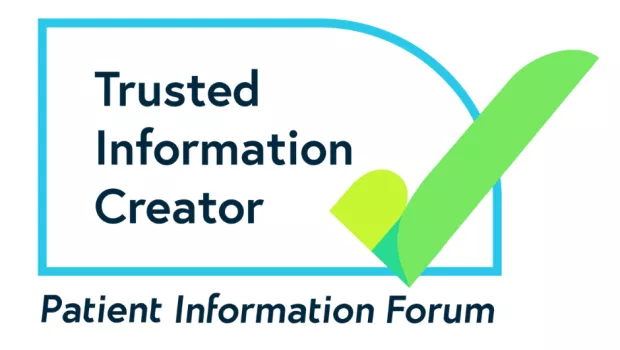This information is for people affected by or concerned about status epilepticus and emergency medication. On this page we tell you about prolonged or cluster seizures and emergency medication for status epilepticus – epileptic seizures that last for more than five minutes.

Status epilepticus, prolonged or cluster seizures, and emergency medication
Back to Epileptic SeizuresWhat is status epilepticus?
Most epileptic seizures do not last long and usually stop by themselves without the need for treatment. Status epilepticus happens when a seizure doesn’t stop in the usual time. If a seizure lasts for five minutes or more, it is known as status epilepticus, which is a medical emergency.
If someone has seizures one after another for five minutes or more (without recovering in between) this is also status epilepticus.
If status epilepticus lasts for 30 minutes or longer, it can cause brain damage or lead to death.
Convulsive status epilepticus is when:
- A tonic-clonic seizure lasts for five minutes or longer
- One tonic-clonic seizure follows another without the person becoming conscious again between seizures
Both of these situations call for urgent treatment.
Any type of seizure can develop into status epilepticus. But tonic-clonic seizures progressing into status epilepticus are the most serious.
Non-convulsive status epilepticus happens when non-convulsive seizures such as absence seizures or focal onset seizures last too long.
Also, people with Lennox-Gastaut syndrome may have tonic seizures that go on too long.
Non-convulsive status epilepticus can be harder to spot. People may seem confused or less responsive, and their speech or behaviour may be affected.
It can also be a serious risk, depending on what’s causing the seizure. You usually need an EEG test to diagnose it.
Prolonged or cluster seizures
When someone has a seizure that lasts for too long (a prolonged seizure) it is a medical emergency. A prolonged seizure lasts for at least 2 minutes longer than a person’s usual seizure. If this happens, you need to follow the emergency management plan from your epilepsy doctor or nurse.
Cluster seizures are usually 3 or more seizures that stop by themselves in 24 hours. If you have cluster seizures, you will need to follow your emergency management plan from your epilepsy doctor or nurse.
Any type of seizure can happen in groups or clusters over hours or days. A person usually recovers between seizures and the clusters will end on their own. But you can be at risk of repeated clusters or status epilepticus if:
- Seizure clusters last longer than usual
- Seizures happen closer together
- You don’t recover as well between seizures or clusters
- The rescue medication doesn’t work
What do I do if I think someone is in status epilepticus?
If you think someone is in status epilepticus, call an ambulance.
If they have an emergency management plan or care plan, you should follow the instructions in their plan. Their plan may include giving them rescue medication. You should only give someone rescue medication if you have been trained to do so.
How can I reduce my risk of status epilepticus?
Herer are some of the things you can do to reduce your risk of having status epilepticus:
- Always take your anti-seizure medication as prescribed by your doctor and try not to miss any doses
- Do not stop taking your medication without speaking to your epilepsy specialist
- If you have cluster or prolonged seizures, make sure you have rescue medicine
- Speak to your epilepsy specialist if you’ve noticed changes in your seizures or had a different type of seizure
- Don’t drink too much alcohol or use recreational drugs
- If you know what your triggers are, try to avoid anything that triggers your seizures
- If you have medical ID, you should wear or carry it with you in case you have a seizure when you’re out and about.
If you are worried about status epilepticus, talk to your epilepsy specialist.
Emergency medication for status epilepticus
In the UK, the two main emergency medications for status epilepticus are:
- Buccal midazolam
- Rectal diazepam
The dose of each of these drugs is based on your age.
Midazolam is a liquid rescue medication. It is the most commonly used emergency medication for seizures.
Buccal midazolam is given in the area in the mouth between the cheek and the gums known as the ‘buccal cavity’.
It is given using a syringe (like the one used in childhood medicines such as Calpol). Because of the syringe, there’s a good chance you will get the right amount of the drug. Buccal midazolam does not make you feel drowsy for long – normally only two to four hours.
Rarely, midazolam can cause breathing difficulties. If this happens, call 999.
If a child in your care has been prescribed buccal midazolam you will receive training on how to give it.
Diazepam is a rectal rescue medication, this means it’s given in the bottom.
Rectal diazepam is available in pre-prepared rectal tubes of four different strengths. The drug comes with instructions on how to give it, but you will need to be trained to give it.
Because diazepam is given in the bottom, it may be difficult to get you in a position to give the drug. And your bowel movements (constipation or pooing), may lead to the wrong amount being given.
You may feel drowsy for 12 hours or more with diazepam.
Very rarely, you might have breathing difficulties. If this does happen, call an ambulance immediately.
Care plan and individualised emergency management plan
If you have epilepsy, you should have a care plan.
A care plan is an agreement between you, your healthcare team and, when appropriate, your family or carers.
Your care plan should include an individualised emergency management plan for status epilepticus, prolonged and cluster seizures.
This should include details of how to respond, which emergency medication to use, how and when to give it, and who is trained to use it.
Your parents or carers should be shown how to give you your prescribed emergency medication, along with any other adults who will be looking after you, including teachers at school.
We’ve developed a ‘Record of use of emergency medication’ form, which they can use in case there’s a time you need emergency medication.
Download the ‘Record of the use of emergency medication’ PDF
A healthcare professional should train you in how to give emergency medication. You shouldn’t be giving the medication unless you’ve been trained.
For this reason, you should share your child’s individualised emergency management plan with your child’s school, so that it can be added their individual healthcare plan.
Training courses
Young Epilepsy runs training courses that cover epilepsy, seizure types, status epilepticus and how to give emergency medication, with practical sessions using a dummy.
For details contact:
training@youngepilepsy.org.uk
Last reviewed July 2025.
Next review due July 2028.
If you would like to find out more about how we produce our information, or the sources of evidence we use, please contact us at healthinfo@youngepilepsy.org.uk
Find out about different types of seizures
What is an epileptic seizure?
Discover what an epileptic seizure is, how to identify a seizure in babies and infants, and about non-epileptic seizures and episodes.
Seizure types
Learn about the differences between focal and generalised seizures and how to identify each.
Generalised onset seizures
Learn about generalised onset seizures, their types, causes, and management. Find resources and support for children and young people with epilepsy.
Focal onset seizures
Learn about epileptic seizures in babies and infants, including types and signs, from birth to one year old.

How can I help someone having a seizure?
Get guidance on how to help someone having a seizure, including when to call an ambulance and helping babies and infants.
Seizure triggers
Learn about common seizure triggers in children and young people, including poor sleep, missed medication, and flickering lights.
Monitoring seizures
Young Epilepsy’s information about nocturnal seizure monitors and other equipment, apps and services for parents of children with epilepsy.
More information about epilepsy
Causes of epilepsy
Learn about the causes of epilepsy, including genetic, metabolic, unknown origins, and epilepsy in infants, from Young Epilepsy.
Epilepsy syndromes
Learn about common childhood and rare infancy epilepsy syndromes in this informative guide from Young Epilepsy.
Epileptic seizures
Understand epileptic seizures, their types, causes, and management. Find resources and support for living with epilepsy.
Diagnosing epilepsy
Find out how epilepsy is diagnosed, what to expect at your first appointment, and how to get the right support for children and young people.
Treatments for epilepsy
Explore various epilepsy treatments, including medication, surgery, and dietary options. Find resources and support for managing epilepsy effectively.
Common co-occurring conditions
Explore common co-occurring conditions like autism, ADHD and dyspraxia in children with epilepsy, and how to recognise and support them early.
Sudden unexpected death in epilepsy (SUDEP)
Learn about SUDEP, who is at risk, and how to reduce the chances of epilepsy-related death in children and young people through safety and support.

This page is PIF TICK approved
Young Epilepsy is a certified member the PIF TICK scheme. The scheme is the only independently assessed certification for both print and digital health information.

